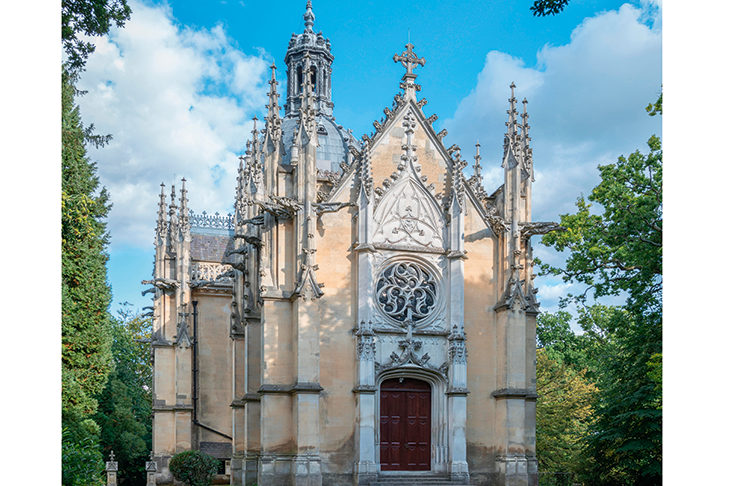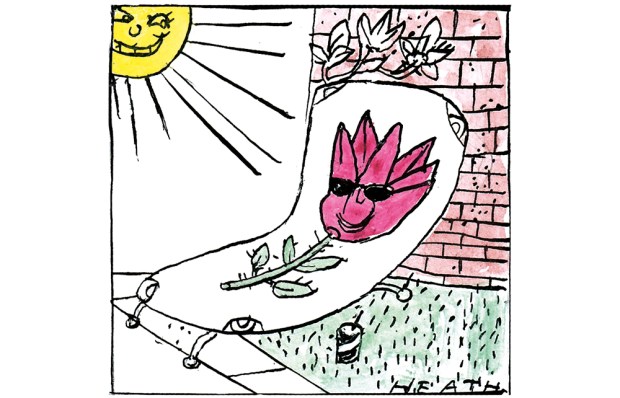‘A little corner of England which is for ever France, irreclaimably French.’ That is how the Catholic priest Monsignor Ronald Knox described the Abbaye Saint-Michel (St Michael’s Abbey) in Farnborough, Hampshire.
It was founded in 1881 by the Empress Eugénie, widow of the Emperor Napoleon III. When they were forced to leave France following the fall of the Second French Empire in 1870, the couple, along with their son Louis-Napoleon, the Prince Imperial, settled in Chislehurst, Kent. The Emperor died there in 1873 and in 1879 Louis was killed fighting for the British in the Anglo-Zulu War, leaving Eugénie bereft. She moved to Farnborough, bought a large house (Farnborough Hill, constructed for the publisher Thomas Longman and now a girls’ school) and built the Abbaye Saint-Michel in the grounds to serve as a monastery and Imperial Mausoleum for her husband and son and, eventually, for herself.
She invited a group of French Benedictine monks from the Abbaye Saint-Pierre at Solesmes in northern France to take up residence at Farnborough. This community eventually became depleted and in 1947 was augmented by monks from Prinknash Abbey in Gloucestershire who, to this day, maintain the abbey’s tradition for Gregorian chant and liturgical publishing and printing. (Point of interest, the prior from 1951 to 1958 was Father Basil Robinson, son of the cartoonist and inventor Heath Robinson.)
Free tours of the abbey and mausoleum take place every Saturday at 3 p.m. Visitors gather outside the discreet iron gates off the A325, a minute’s walk from Farnborough station. At 2.50 p.m. sharp the gates swing soundlessly open and everyone troops up the winding driveway to the abbey church at the top of the hill. A silent monk materialises to unlock the west door and we all file in and sit down in a pew while a local guide goes through the history and architecture of the church.
It was designed in gothic style by French architect Gabriel-Hippolyte Destailleur (architect of Waddesdon Manor in Buckinghamshire) and sports a renaissance dome in homage to the Hotel des Invalides in Paris, where Napoleon I is buried. The walls and pillars are decorated with Napoleonic symbols of eagles and bees.
The highlight is the Imperial crypt, set beneath the east end of the church. Here, entombed in three granite sarcophagi donated by Queen Victoria, lie Napoleon III, the Empress Eugénie and Prince Louis (or, as he will always be known to romantics, Napoleon IV, the last Emperor of France). It is a strangely moving and slightly surreal experience to be in Hampshire walking amongst the dust of Imperial France.
From time to time someone comes along to demand the return of the Imperial relics to France but, as it is gently pointed out, there is no need for that. This little corner of England is, after all, for ever France.
Got something to add? Join the discussion and comment below.
Get 10 issues for just $10
Subscribe to The Spectator Australia today for the next 10 magazine issues, plus full online access, for just $10.
You might disagree with half of it, but you’ll enjoy reading all of it. Try your first month for free, then just $2 a week for the remainder of your first year.














Comments
Don't miss out
Join the conversation with other Spectator Australia readers. Subscribe to leave a comment.
SUBSCRIBEAlready a subscriber? Log in